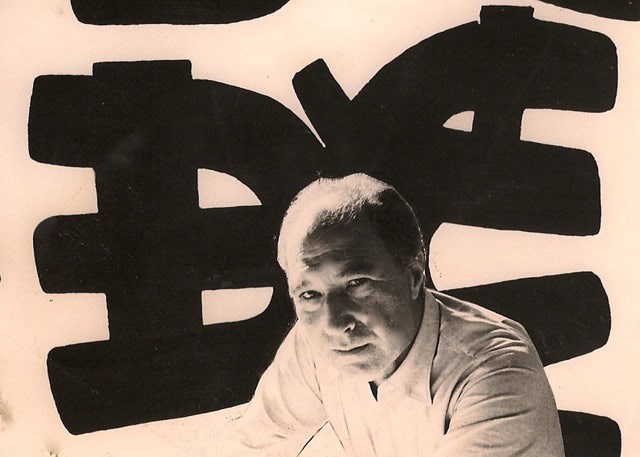
Evaluation Giuseppe Capogrossi
Giuseppe Capogrossi Valuations - Want to sell a Giuseppe Capogrossi piece? Request a complimentary and confidential valuation!Colasanti Casa d'Aste will review your submission and offer a free-of-charge estimate, if your item is suitable for our auctions.
biography
Giuseppe Capogrossi, born in Rome on March 7, 1900, and died in the same city on October 9, 1972, was one of the most important Italian painters of the 20th century, renowned for his central role in the Scuola Romana and Italian Informel movements. Descended from a noble Roman family, Capogrossi graduated in Law from La Sapienza University in Rome, but his true calling was always painting, to which he devoted himself full-time after his studies.
Capogrossi’s artistic training began in the 1920s at the Libera scuola di nudo of Felice Carena, one of Rome’s most prestigious art schools. Between 1927 and 1933, he made several stays in Paris, where he developed a figurative and tonal style influenced by Italian classical tradition. During this period, he participated in group exhibitions and, together with Emanuele Cavalli and Francesco Di Cocco, exhibited at the Pensione Dinesen in Rome in 1927. In 1933, with Cavalli and Roberto Melli, he signed the Manifesto del Primordialismo Plastico and took part in an exhibition at the Galerie Bonjean in Paris, presented by critic Waldemar George, who coined the term “Ecole de Rome” for them.
From the 1940s, Capogrossi’s painting underwent a profound transformation: his colors became more vibrant, with shades of red, purple, and orange, and his brushwork grew more dynamic. After World War II, Capogrossi moved towards abstraction, becoming one of the leading exponents of Italian Informel painting, alongside Alberto Burri. In 1950, he was among the founders of the Gruppo Origine, together with Mario Ballocco, Alberto Burri, and Ettore Colla, a collective that promoted artistic research based on sign and matter.
Capogrossi’s work is characterized by a constant exploration of the sign, which becomes the central element of his poetics: his “surfaces” are composed of repeated signs, almost an abstract writing, reflecting a deep meditation on existence and the human condition. His works have been exhibited in numerous international shows, including the Venice Biennale, the Milan Triennale, Documenta in Kassel, and the São Paulo Biennial in Brazil.
Capogrossi’s artistic training began in the 1920s at the Libera scuola di nudo of Felice Carena, one of Rome’s most prestigious art schools. Between 1927 and 1933, he made several stays in Paris, where he developed a figurative and tonal style influenced by Italian classical tradition. During this period, he participated in group exhibitions and, together with Emanuele Cavalli and Francesco Di Cocco, exhibited at the Pensione Dinesen in Rome in 1927. In 1933, with Cavalli and Roberto Melli, he signed the Manifesto del Primordialismo Plastico and took part in an exhibition at the Galerie Bonjean in Paris, presented by critic Waldemar George, who coined the term “Ecole de Rome” for them.
From the 1940s, Capogrossi’s painting underwent a profound transformation: his colors became more vibrant, with shades of red, purple, and orange, and his brushwork grew more dynamic. After World War II, Capogrossi moved towards abstraction, becoming one of the leading exponents of Italian Informel painting, alongside Alberto Burri. In 1950, he was among the founders of the Gruppo Origine, together with Mario Ballocco, Alberto Burri, and Ettore Colla, a collective that promoted artistic research based on sign and matter.
Capogrossi’s work is characterized by a constant exploration of the sign, which becomes the central element of his poetics: his “surfaces” are composed of repeated signs, almost an abstract writing, reflecting a deep meditation on existence and the human condition. His works have been exhibited in numerous international shows, including the Venice Biennale, the Milan Triennale, Documenta in Kassel, and the São Paulo Biennial in Brazil.

